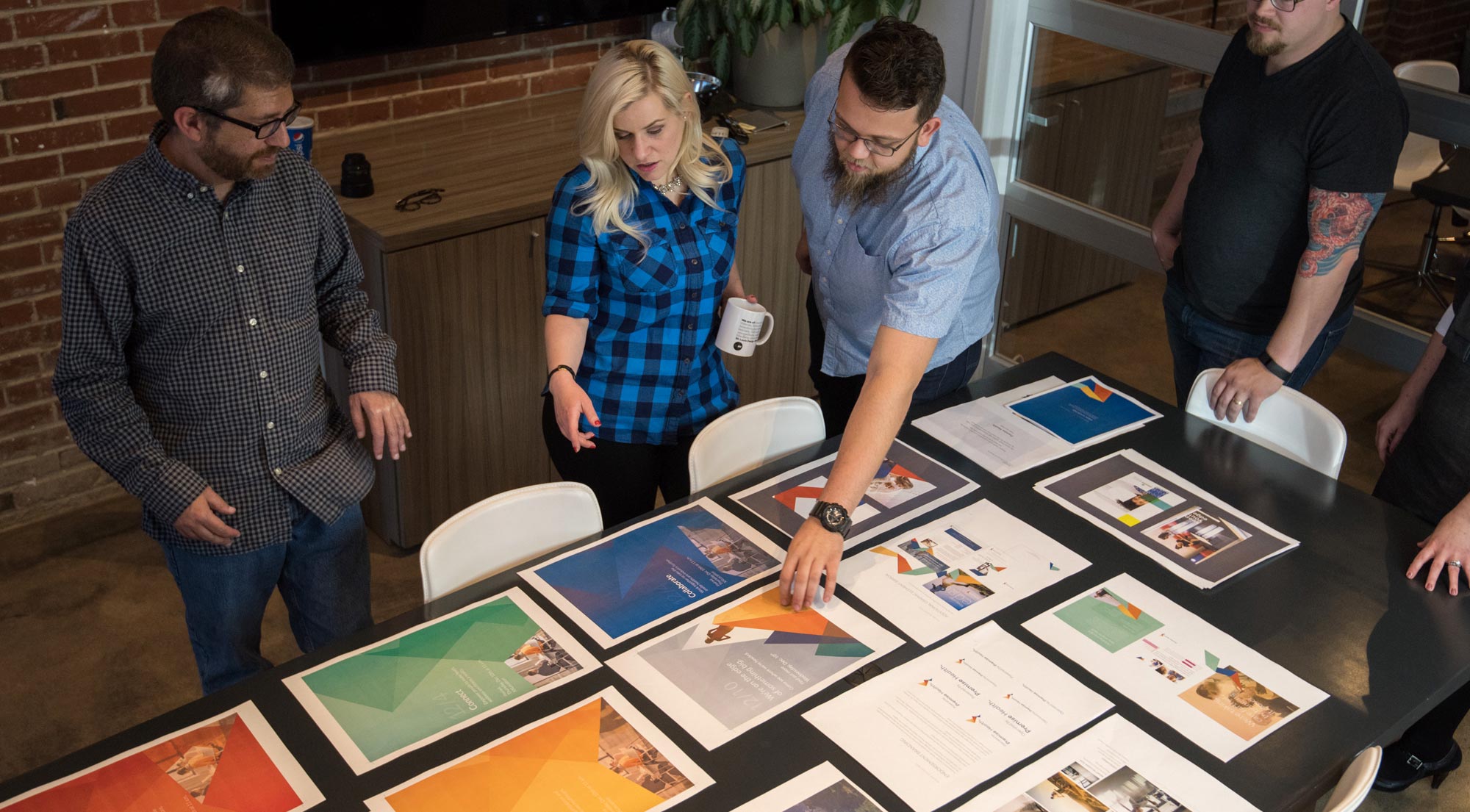Designing the Experience for Your Brand
I’m not an experience designer. I’m not even a graphic designer. What I am is a fan of how design influences experiences.
One of my favorite experiences is going out to a restaurant. When you visit a restaurant, what do you remember most about the experience – besides the food? When I’m visiting a new restaurant, my experience begins as soon as I start my research. I go online and look at the menu, pictures of the space and reviews. Once I arrive at the restaurant, I love to see how it all translates (if it translates). I’m curious to see how my impressions are shaped as I experience the service, the atmosphere and, of course, the presentation and taste of my food. My feelings once I’ve left are a good indicator of how successful the restaurant was in delivering the experience they’d hoped I would have: What do I remember? Would I recommend this place? Do I want to come back?
At Atomicdust, we work with our clients to solve business problems. Whether their goals revolve around strengthening internal cultures, increasing awareness or boosting sales, our job is to give them the tools to get there. That always starts with looking at the experience their stakeholders – both employees and customers – have with the brand.
This is the essence of experience design: delivering a better experience that will contribute to business goals.
What is Experience Design, Anyway?
In my quest to learn more about experience design, I’ve read a lot – and come across a lot of buzzwords. User experience. Human-centered design. User interface design. Even the term “experience design” has started to lose its meaning. Essentially, it all comes down to fact that good design can help people and move businesses forward.
To truly understand experience design, let’s break it into four principles: purpose, understanding, empathy and simplicity.
Purpose
Sure, good design should be aesthetically pleasing, but it should also provide value for both the brand and the user. It should help improve the situation. It should push the envelope, and not just visually.
Last year, we worked with onsite healthcare provider Premise Health to not only create a new visual identity for the company, but to design a strategy that would align and improve the company’s culture after a major merger. In that situation, design had a purpose that went far beyond just visual impact.
Understanding
How do you ensure that design achieves its purpose and creates value? By taking the time to understand the needs and behaviors of stakeholders. Identify critical interactions with the brand, or “touchpoints,” where you can influence opinion or encourage action.
A lot of our work at Atomicdust happens in the digital space, so, yes, we often use traditional measurements like page views, the amount of time spent on each page and clicks on content. Where possible, we also want to know what’s driving visitors to take these actions. It’s this deeper, psychological understanding that can help us build a better and more purposeful experience.
Empathy
Empathy is one of the hardest of these principles to achieve, but it’s also the most important. When you can anticipate what someone needs, how they feel, and how they see the world, you can begin to understand how they might react – and how you might influence this reaction.
Putting yourself in your audience’s shoes is essential to experience design. When we started working with Porano Pasta, we visited a number of fast casual restaurants. We observed how people moved through the spaces and interacted with each other. From there, we built recommendations for wayfinding, messaging and menus to support everything we learned. Everything we made anticipated and met Porano’s audience’s needs.
Simplicity
Design doesn’t have to be complicated. One of the things I’ve learned over the years is that the best experiences appear to be simple. On the web, for example, the more steps and complications you introduce, the worse the experience becomes for the user. If you’re trying to get the audience to act, eliminate as many barriers as you can. Less is more.
How is your brand thinking about the experience you provide your end users? Having a clear purpose, insight into how your audience is thinking and feeling at the time of action and a simple approach to encourage that desired action is what you need to design better and more effective experiences.
Want to learn more about Experience Design?
Download Mike & Tara’s presentation on experience design. They discuss our philosophy and share some tips for brands to consider when designing around their own customer experience.

